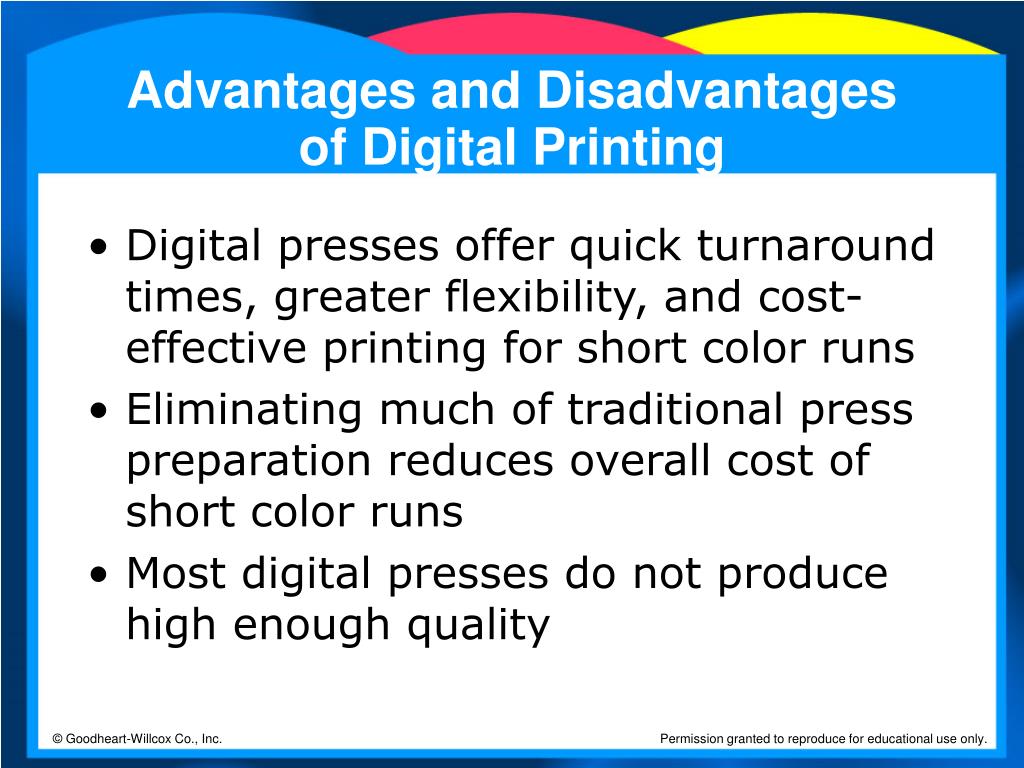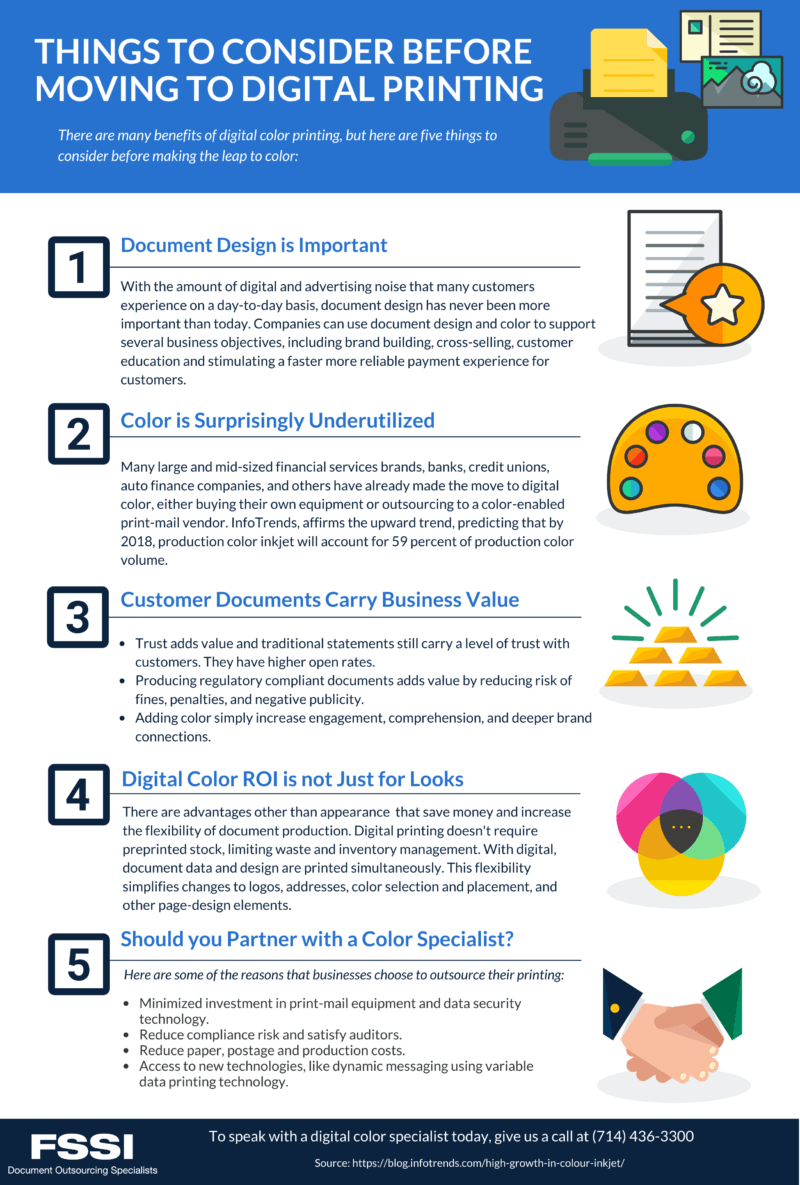Some Known Details About Digital Printing
Some Known Details About Digital Printing
Blog Article
Facts About Digital Printing Uncovered
Table of ContentsHow Digital Printing can Save You Time, Stress, and Money.The Ultimate Guide To Digital PrintingThings about Digital PrintingDigital Printing for BeginnersThe Buzz on Digital PrintingExcitement About Digital Printing
Variable data printing, such as direct mail with individualized codes and addresses, is preferably fit for electronic printing. Digital quick printing just needs 4 steps of design, review, printing and binding to obtain every little thing done. Digital fast printing has an unrivaled advantage: print on demand.According to PMMI, electronic printing allows brands and suppliers to respond swiftly to client needs while improving the supply chain, decreasing warehousing price and waste, and enjoying faster time to market. That all sounds wonderful, yet just how does this innovation do all that? The major differentiator of these modern technologies is that there are no set-up fees and no plates with digital printing.
Not known Details About Digital Printing
This results in quicker turn-around time and decreases price when making use of digital printing.
Digital printing is very versatile, so it's easy to make adjustments to the bundle style quickly. It all goes back to the plates.
With conventional printing methods, short-run printing is simply not possible. Because a fantastic design can make or damage your item, digital printing continually develops high-quality, clear and colorful graphics each time.
Digital printing is the process of printing digital-based pictures directly onto a selection of media substrates. There is no requirement for a printing plate, unlike with countered printing. Digital data such as PDFs or desktop computer posting data can be sent straight to the electronic printing press to publish theoretically, photo paper, canvas, fabric, synthetics, cardstock and other substrates.
The Main Principles Of Digital Printing
According to PMMI, electronic printing allows brands and manufacturers to respond swiftly to consumer demands while enhancing the supply chain, reducing warehousing price and waste, and delighting in faster time to market. That all noises excellent, but exactly how does this modern technology do all that? The major differentiator of these modern technologies is that there are no set up fees and no plates with electronic printing.
According to Wikipedia, the best difference between electronic printing and standard approaches such as lithography, flexography, gravure, or letterpress is that there is no need to replace printing plates in electronic printing, whereas in these analog printing techniques home plates are continuously replaced. This causes quicker turnaround time and decreases expense when using digital printing.

Digital Printing - Truths
A lot more inventory can indicate more waste down the roadway. With traditional printing approaches, short-run printing is just not possible. Due to the fact that a terrific layout can make or damage your product, digital printing regularly develops top quality, clear and vivid graphics each time. Digital printing on flexible bags includes the brilliant, vivid, and precise Recommended Reading graphics that virtually beckon consumers to get to out and touch them.

According to PMMI, digital printing permits brand names and manufacturers to respond rapidly to consumer needs while enhancing the supply chain, reducing warehousing expense and waste, and delighting in faster time to market. That all noises great, however exactly how does this innovation do all that? The major differentiator of these innovations is that there are no set-up charges and no plates with digital printing.
The 5-Minute Rule for Digital Printing
According to Wikipedia, the best difference in between electronic printing and typical approaches such as lithography, flexography, gravure, or letterpress pop over to this site is that there is no need to change printing plates in electronic printing, whereas in these analog printing techniques home plates are continuously replaced. This causes quicker turn-around time and lowers expense when utilizing electronic printing.
Digital printing is extremely flexible, so it's simple to make modifications to the package design quickly. It all goes back to the plates.

Some Known Facts About Digital Printing.
Digital printing is the procedure of printing digital-based photos directly onto a selection of media substrates. There is no requirement for a printing plate, unlike with balanced out printing. Digital documents such as like this PDFs or desktop computer posting documents can be sent out straight to the digital printing press to print theoretically, picture paper, canvas, textile, synthetics, cardstock and various other substratums.
Report this page